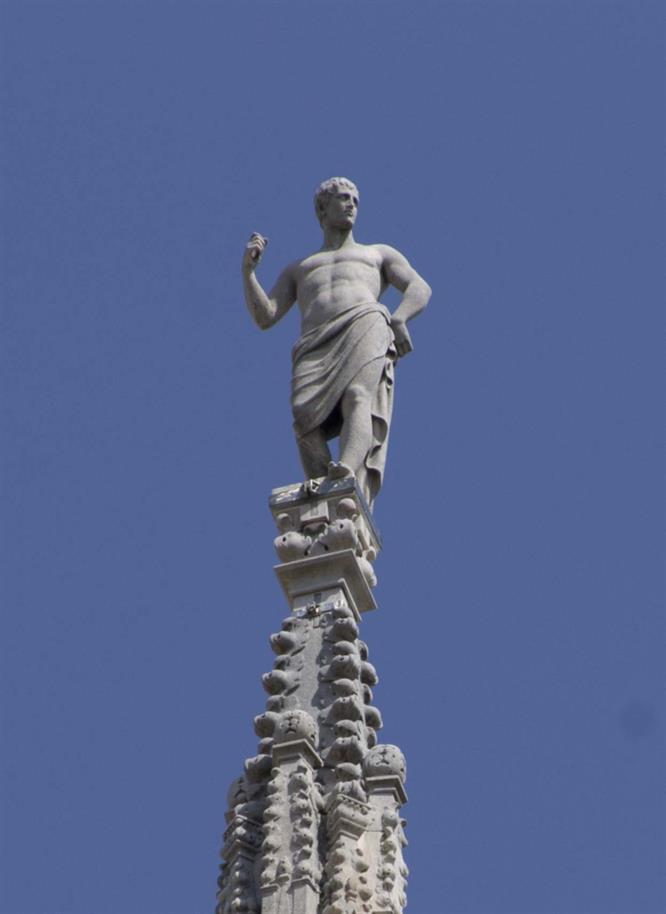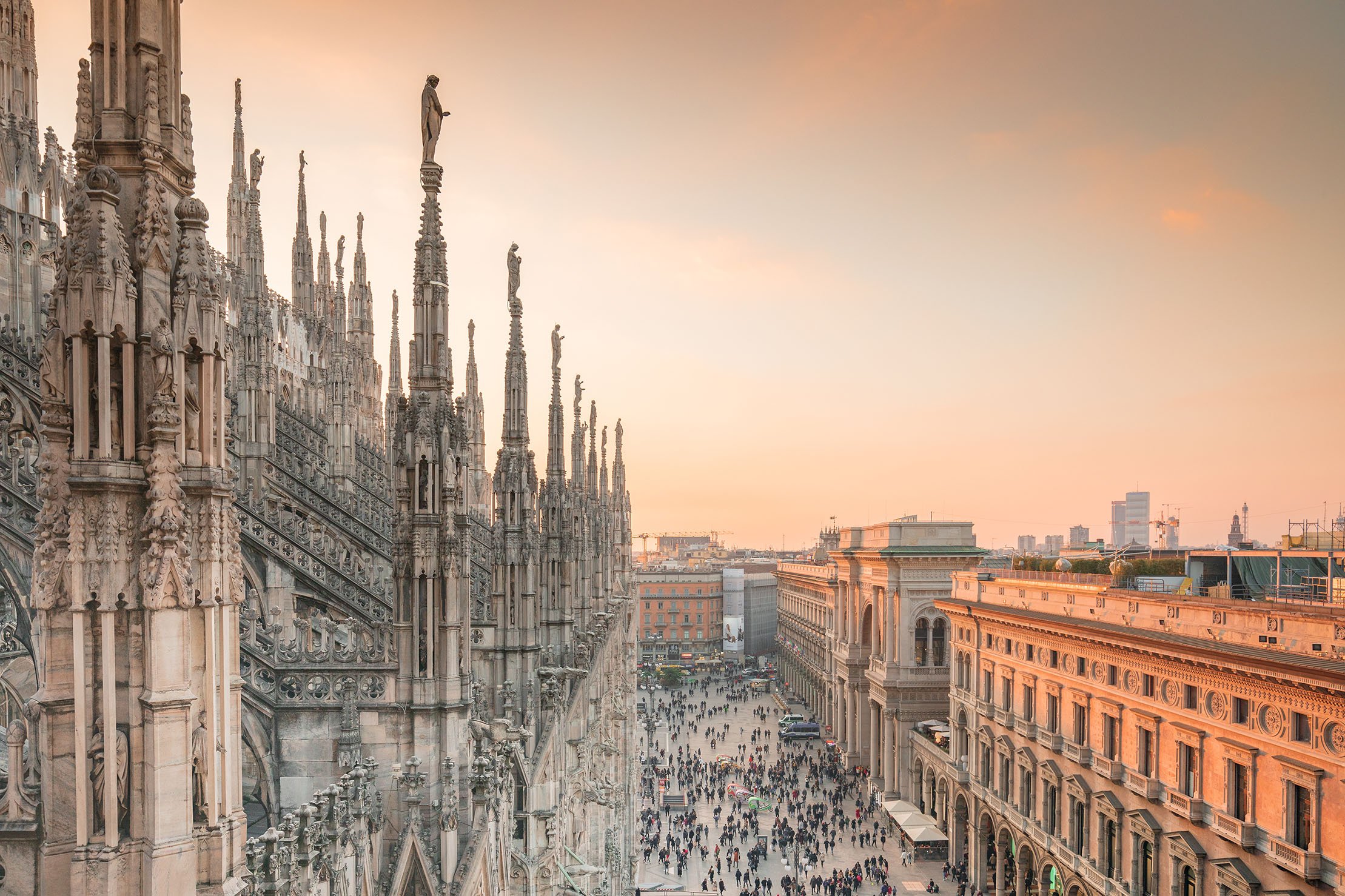This spire is located on the south side of the central terrace. It is crowned by a statue representing Saint Napoleon, carved in 1811 by Giuseppe Fabbris. “Saint Napoleon” belongs to political history rather than hagiography. It is known that Napoleon Bonaparte, the future French emperor, was born in Ajaccio on 15 August 1769: only after 1801 did not so much Napoleon, but mainly his entourage became concerned about using this date to consolidate the popular prestige of a man whose ambition grew hand in hand with his successes. The victory of Austerlitz, on 2 December 1805, brought his exaltation to a climax, and the Tribunate proposed, amongst other things, a celebration of the Emperor’s birthday. The decree of 19 February 1806, therefore, established that « the feast day of Saint Napoleon and the date of the reinstatement of Catholicism in France would be celebrated throughout the empire’s territory on the 15th of August each year: the feast of the Assumption and the date the Concordat was perfected. » In this way , therefore, the feast day of Saint Napoleon came to be first celebrated, both officially and liturgically, on 15 August 1806, more for the emperor’s glory than in remembrance of the martyr saint, who had been ignored up until then. Political events soon made sure that Saint Napoleon’s feast day was forgotten again. On July 16 1814, King Louis XVIII annulled the decrees pertaining to the 15 August celebration and then, in 1852, the emperor Napoleon III issued a decree that declared this day again a national holiday, but only as the anniversary of the birth of his uncle.
ST. NAPOLEON
Napoleone Bonaparte





 Tiburio
Tiburio

